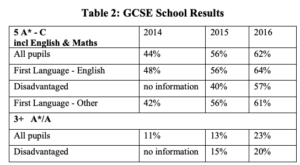Language plays a central role in teaching and learning. If we want our students confidently reading and writing across the range of genres and registers required by schooling, then we need to understand how language works to make meaning. Our experience has shown us that the Systemic Functional Linguistics (SFL) model is the most powerful and effective tool for understanding how language works to make meaning. SFL emphasises the critical role a metalanguage plays in this exploration of meaning-making, providing as it does the means for talking about and reflecting on the language choices we make in any given text.
In her article, ‘A whole school approach to  SFL metalanguage and the explicit teaching of language for curriculum learning’, Gail Forey analyses the benefits of explicitly teaching language for learning across disciplines, using a metalanguage taken from the SFL model. The study was conducted between April 2015 and April 2016 at a school in the United Kingdom. Its aim was to review, reflect on and investigate the impact of Lexis Education’s How Language Works course introduced in the school in 2012.
SFL metalanguage and the explicit teaching of language for curriculum learning’, Gail Forey analyses the benefits of explicitly teaching language for learning across disciplines, using a metalanguage taken from the SFL model. The study was conducted between April 2015 and April 2016 at a school in the United Kingdom. Its aim was to review, reflect on and investigate the impact of Lexis Education’s How Language Works course introduced in the school in 2012.
Gail Forey’s findings from the study support the use of SFL and a rich metalanguage as one that has the potential to produce positive impact on both teachers and students in primary, secondary and tertiary contexts in the UK and internationally. From 2014 – 2016, as shown in the table below, the GCSE results have improved consistently in the school for all students, both those for whom English is the first language and EAL learners.
If you are wanting to know more about SFL, its theoretical background, its use in the classroom and its impact, we strongly encourage you to read Gail’s paper, published in the Journal of English for Academic Purposes.
Gail Forey is a Senior Lecturer in Applied Linguistics at the Department of Education, University of Bath.

